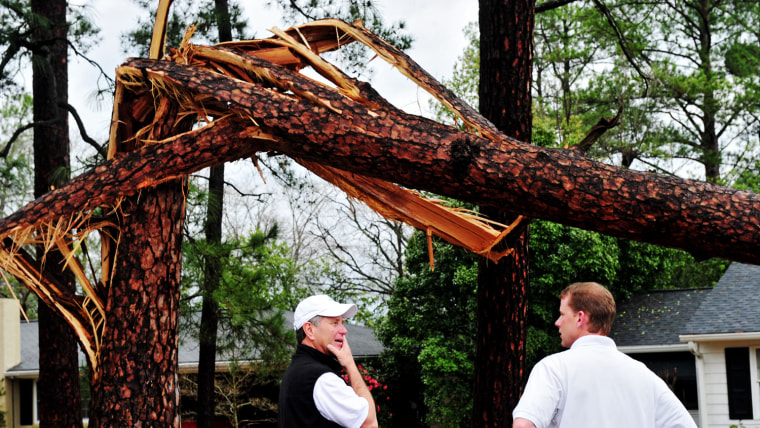Friday was the second busiest day of the year for severe weather, according to preliminary government statistics, serving as a reminder that tornadoes can strike at any time of the year.
Across Georgia, South Carolina and Virginia, nine tornadoes were reported on Friday, according to preliminary data from the nation's Storm Prediction Center (SPC) in Norman, Okla. The SPC recieved 169 storm reports for the day, the year's second highest total. The strongest tornado was an EF-2 on the tornado damage scale that struck near the Aiken-Lexington County line in South Carolina. No fatalities were reported during the outbreak, but several homes were damaged. The year's largest tornado outburst was on Jan. 22, when 45 tornadoes were reported. Two people died during that severe weather outbreak.
These winter outbreaks show that winter tornadoes are no myth. The main tornado season runs from spring to early summer, but tornadoes can form under a variety of conditions and strike during fall and winter.
Tornadoes are, however, less common during the winter. Of the five tornado-free months since 1950, three of those were winter months, according to the National Weather Service.
During the fall and winter, nighttime tornadoes are a big risk since the days are shorter.
Fall and spring typically see more tornadoes because they are both transitional periods where masses of warm and cool air are more likely to collide and create the thunderstorms that can spawn twisters.
Tornadoes form where warm moist air is trapped underneath a layer of cold, dry air. The strongest tornadoes often form when the wind at around 10,000 feet (3,000 meters) above the ground blows in a different direction than the surface wind. In the spring, warm air rising in the storm system hits this so-called wind shear and is pushed from a vertical motion to a horizontal motion, creating a strong rotation.
More severe weather is forecast across the South this week, according to the SPC forecast, with a slight chance for severe thunderstorms on Tuesday across parts of Oklahoma, Nebraska, Texas and portions of the lower Ohio Valley and Mid-South.
You can follow OurAmazingPlanet staff writer Brett Israel on Twitter: @btisrael. Follow OurAmazingPlanet for the latest in Earth science and exploration news on Twitter @OAPlanet and on Facebook.
